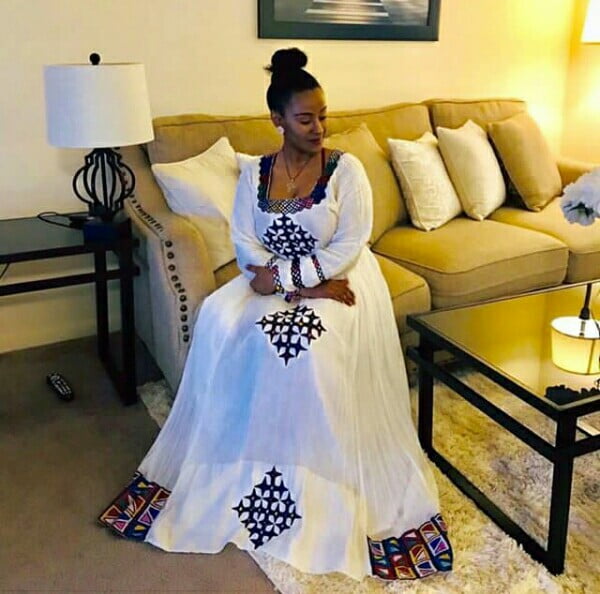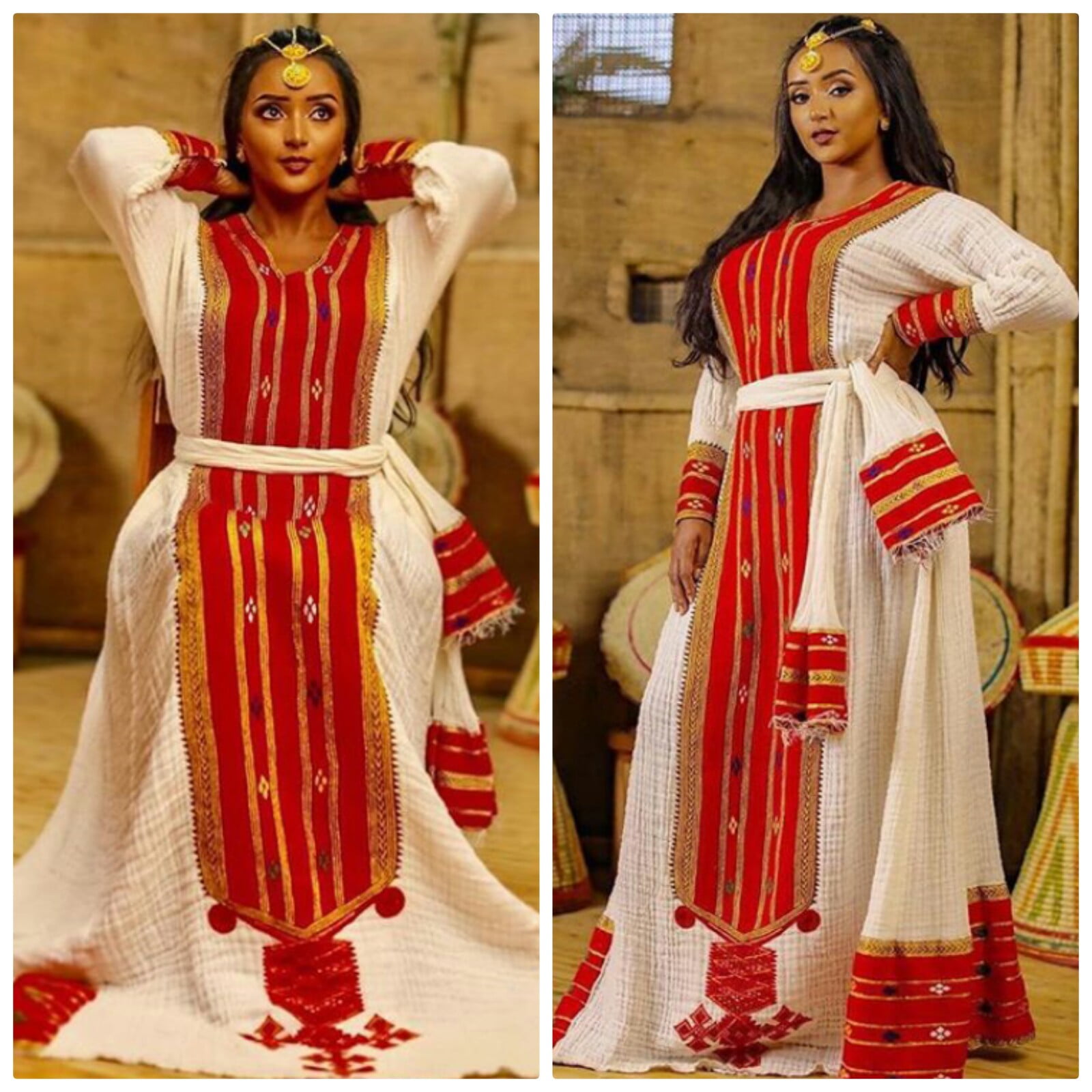Table Of Content

By embracing and wearing the Habesha Kemis, Ethiopians support local artisans and contribute to the preservation of traditional craftsmanship. One of the most distinctive features of Habesha Kemis is its intricate handwoven patterns. The patterns often depict geometric shapes, flowers, and other symbols that hold cultural significance. A typical West African meal is heavy with starchy items, meat, spices, and flavors. A wide array of staples are eaten across the region, including those of Fufu, Banku and Kenkey (originating from Ghana), Foutou, Couscous, Tô, and Garri, which are served alongside soups and stews. Fufu is often made from starchy root vegetables such as yams, cocoyams, or cassava, but also from cereal grains like millet, sorghum or plantains.
Exotic Yewubdar Ethiopian Traditional Clothes-58
The Habesha Kemis is not just a piece of clothing; it is a reflection of Ethiopian identity and cultural pride. For many Ethiopian women, wearing the Habesha Kemis is a way to honor their heritage and celebrate their roots. It is a symbol of their connection to their ancestors and a reminder of the rich history and traditions that have been passed down through generations.
Habesha Kemis: The age-old holiday attire - EthioSports
Habesha Kemis: The age-old holiday attire.
Posted: Sat, 14 Sep 2019 07:00:00 GMT [source]
Sabas Beauty Traditional Ethiopian Wedding Clothes-59
Both the bride and groom wore traditional qun kwa outfits for their Chinese tea ceremony. Their two-piece outfits featured dragons and phoenixes—symbols of a harmonious marriage. This pink-and-gold ensemble was just one of many traditional outfits the Cambodian bride wore on her big day. For this Korean ceremony, the bride stepped out in an elaborate The Hanbok hanbok—a traditional, formal form of attire. "I have been buying cultural Ethiopian clothing online now for years, and without a doubt Habesha Kemise has always provided me with the best quality garments on time." The following is a collection of 100 of the most amazing traditional and modern Ethiopian clothing (Habesha Kemis/Kemise) we found in 2024.
Malaysian Wedding Dress
These accessories enhance the overall look and add a touch of sophistication to the outfit. Some groups opt to wear nothing to very little, for example, the Hamer people traditionally wear goat skins and the Afar people's cultural dress is a waistcloth. In 2022 Hanan came out in pink Habesha Kemis which made her the best-dressed woman of the year. Fufu-starchy foods (usually made from fermented cassava roots) are served with grilled meat and sauces. Many local ingredients are used while preparing other dishes like spinach stew, cooked with tomato, peppers, chillis, onions, and peanut butter. Groundnut (peanut) stew is also prepared, containing chicken, okra, ginger, and other spices.
የገቢዎች ሚኒስቴር ቢሮ Ethiopian Ministry Of Revenue Head Office Interior Design + Build

In Uganda, steamed, green bananas called matoke provide the starch filler of many meals. The various cuisines of Africa use a combination of locally available fruits, cereal grains and vegetables, as well as milk and meat products. In some parts of the continent, the traditional diet features a preponderance of milk, curd and whey products. In much of tropical Africa, however, cow's milk is rare and cannot be produced locally (owing to various diseases that affect livestock). "This dress was inspired by the contemporary Malaysian kebaya design," shares the photographer, Qay of Weddings by Qay. (Kabayas are garments worn in Malaysia and the surrounding region.) The bride's pretty white outfit (by Hatta Dolmat) also had some Western influence.
The Habesha Kemis is a symbol of Ethiopia’s rich cultural heritage, and it can help you connect with your roots and convey your cultural identity to your audience. Eritrean and Ethiopian cuisine (especially in the northern half) are very similar, given the shared history of the two countries. The related Somali cuisine consists of an exotic fusion of diverse culinary influences. Varieties of bariis (rice), the most popular probably being basmati, usually serve as the main dish.

Chinese Wedding Dress
This cross-cultural exchange not only promotes diversity but also fosters a deeper appreciation for Ethiopian culture and its traditional clothing. Ethiopian Habesha Kemis, also known as Habesha dress, is a traditional clothing worn by women in Ethiopia. It is a symbol of elegance and cultural pride, representing the rich history and evolution of Ethiopian fashion. In this article, we will explore the origins of Habesha Kemis and how it has evolved over time.
Exploring the Rich History and Evolution of Ethiopian Habesha Kemis
There are also several types of traditional and modern alcoholic beverages including many European-style beers. For Ethiopians living abroad, maintaining a connection to their cultural heritage is of utmost importance. One way that many Ethiopians in the diaspora choose to do this is through traditional dress, particularly the Habesha Kemis, which is an elegant, flowing dress that is synonymous with Ethiopian culture.
Habesha Kemis: A Timeless Piece of Ethiopian Fashion
Ethiopians in the diaspora often wear the Habesha Kemis to celebrate their culture and heritage. It is a way to honor Ethiopian traditions and connect with other Ethiopians living abroad. Dressing in the Habesha Kemis is also a way to pass on this important piece of Ethiopian culture to future generations as a reminder of their rich heritage. Another way to incorporate modern styles into traditional Habesha Kemis is by adding modern accessories. For example, wearing a statement necklace or earrings made of modern materials like gold or silver can elevate a traditional Habesha Kemis to a more modern and glamorous look.
Indian brides often wear lehengas, a traditional type of dress with impressive embroidery. Bolivian wedding attire is gorgeous and colorful, as this traditionally-dressed bride went to show. To honor her culture, this bride donned a kimono, a traditional robe-like garment. "Masi is made from the bark of the paper mulberry tree," explains the photographer, Gitte of Kama Catch Me. So why not add a touch of elegance and sophistication to your wardrobe with a Habesha Kemis from Ethiopiantraditionaldress.com?
In embracing Habesha Kemis, people are not only appreciating the beauty of the dress but also acknowledging the importance of cultural preservation. By wearing this traditional attire, individuals are contributing to the preservation of Ethiopian heritage and ensuring that it continues to be passed down to future generations. Furthermore, the popularity of Habesha Kemis has also sparked a sense of cultural pride among Ethiopians living abroad. It has become a way for them to connect with their roots and showcase their heritage.
Ethiopia, a country rich in history and culture, is known for its vibrant and diverse traditional clothing. One of the most iconic and cherished garments in Ethiopian culture is the Habesha Kemis. This traditional dress holds great significance in the cultural identity of the Ethiopian people, representing elegance and cultural pride. Habesha Kemis is not only a traditional dress but also a symbol of cultural pride. Many women wear the dress during special occasions such as weddings, religious ceremonies, and cultural festivals.
It has become a fashion statement, not only in Ethiopia but also in other parts of the world. Many fashion designers have incorporated elements of the Habesha Kemis into their collections, showcasing the beauty and elegance of Ethiopian traditional clothing to a global audience. One way designers are incorporating modern styles into traditional Habesha Kemis is by incorporating contemporary prints and patterns. These prints can be bold and colorful, adding a modern twist to a classic design. They can be incorporated into the fabric of the Habesha Kemis or added as a decorative element, creating a unique and eye-catching look.
Whether you wear it for a special occasion, or simply to embrace the beauty of Ethiopian fashion, this dress is sure to turn heads and make a lasting impression. The popularity of Habesha Kemis has also led to the creation of various accessories and complementary garments. Women often pair the dress with a shawl called a “netela” and adorn themselves with jewelry such as necklaces, bracelets, and earrings.

No comments:
Post a Comment